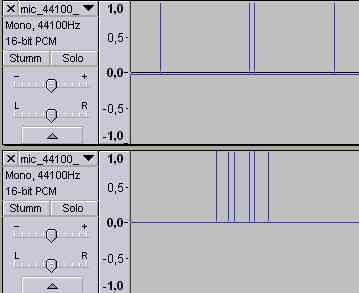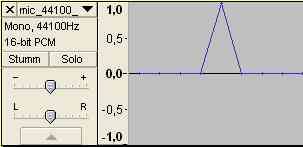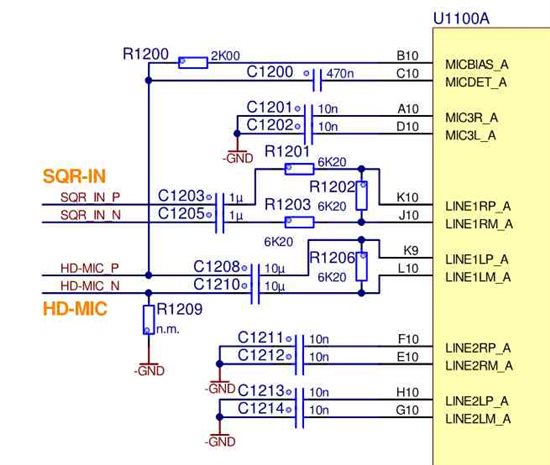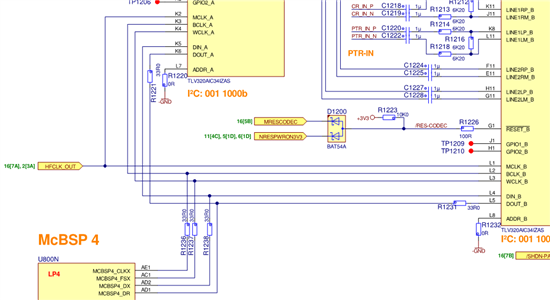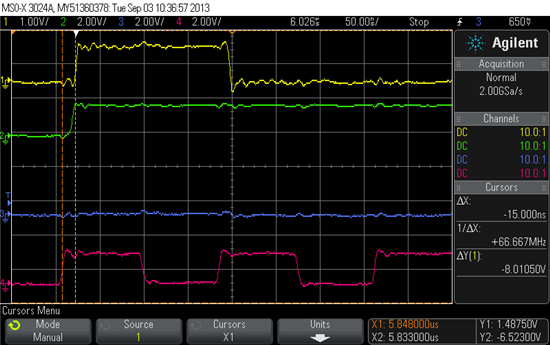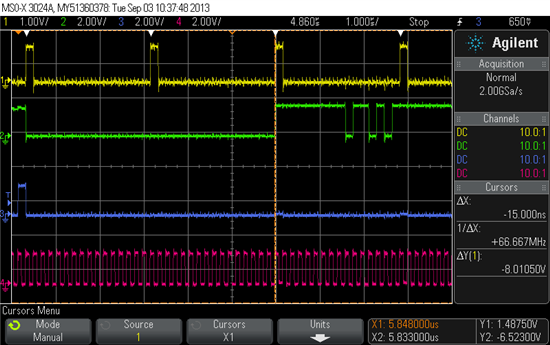Hi,
we have a very strange effect: All 4 AIC34 Codec ADCs seems to produce single sample spikes on all channels at a rate of 100-1000ms statistically distributed. This looks like this when viewed in Audacity:
The spikes on the 4 channels do sometimes correlate but not necessarily.
Zoomed the spikes look like that. One can see that's always only one single sample.
Depending on the ADC DC offset, the spikes may also be inverted and go from the DC-Offset line to 0.0.
The effect can be reproduced on all of our devices (OMAP DM3730 + AIC34 w/ 26 MHz Clock).
Muting the corresponding ADC PGA (e.g. Register 15 Left-ADC PGA Gain Control Register) while recording removes the spikes.
Routing the audio input signals to an analog codec output seems not to have the spikes.
All audio inputs are configured differentially and have 6.2k resistors directly at the differential inputs, i.e. between LINE1RP LINE2RM:
Any ideas? Thanks in advance.
BR Roland


